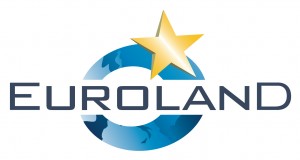With the forthcoming biggest enlargement („big bang“) in its history, the European Union is undoubtedly becoming more conscious of the question of boundaries. This can be recognized from a number of documents and discussions made public since 2002 when at the Copenhagen European Council (12/13 December, 2002) enlargement with ten new countries got a final go ahead. Before, external boundary questions received rather little attention with the exception of the Schengen cooperation and maybe the Euro-Mediterranean Partnership agreement in 1995. Whereas if we go back before 1989 the Union, at that time the European Economic Community (EEC), was simply not “political” enough to raise the boundary question, apart from the fact that Europe was divided by the „Iron Curtain“ which in many ways appeared to be the ultimate border. Hence, it is not surprising that it took the EU some time to cast full attention on this problem. But it was obviously the decision for a „big bang“ enlargement which provided the final kick. Now, it is interesting to see how the awareness of this question will unfold as a policy in the coming ten or fifteen years. Given the character of the phenomenon, the attention to how the EU will conceptualise its external boundaries can never be high enough. In short: Boundary can quickly be understood through the metaphor of „skin“. Like the „skin“ of any entity, the boundary can give us much important information about the state of a political/societal system. It can indicate petrification as well as dissolution of an entity or system. In any case, boundary remains an indispensable part of something called identity. Hence a discourse on boundary always includes aspects of identity. It is its mirror picture.
{{In search for the limits of Europe}}
Taking this into account, it is not surprising that in an agenda setting speech the President of the Commission Romano Prodi outlined the policy approach to this problem of identity of the European Union. The speech delivered on December 6th, 2002 shortly before the Copenhagen European Council is titled “A Wider Europe – A Proximity Policy as the key to stability” (SPEECH/02/619) and can be understood as an attempt to initialise the new policy. Although the main thrust of the speech is simply that enlargement will enable the Union to project “sustainable stability and security” beyond its new external borders from which a “ring of friends” should evolve which will have the perspective of “sharing everything with the Union but institutions”, the text contains a number of more tacit policy aspects which deserve a closer scrutiny in my opinion. One is the question “Where does Europe end?” which Prodi shortly points out as a reason behind the need to come up with something like a neighbourhood policy. The President of the Commission recognizes that the EU “cannot go on enlarging forever”, because this would “water down the European political project”. Unfortunately he leaves the reader puzzled about his own answer to this vital question. Quoting the Treaty on European Union (TEU, Art. 49), the Copenhagen Criteria and a “ring of friends” from Russia to Morocco in one breath is somehow confusing.
Article 49 defines that “any European State” may apply for membership but it does not define “Europe”. Although most people probably follow a geographical definition of Europe, this does not always seems to be the case in politics. Example: The acceptance of Turkey with geographically 97 per cent of its area in Asia as a candidate for EU membership at the Helsinki IGC in 1999, whereas Morocco with similar historical linkage to Europe has been refused before. On the other hand, the Copenhagen Criteria as such have no geographical reference at all. They are universalistic criteria which could permit any country to apply for membership in the EU. Finally, the “ring of friends” is rather an emotional expression than a political concept – Prodi uses it more or less synonymous with “our future ‘backyard’”. It appears as if each parameter for an EU identity policy represents different interests, assumptions and historical constellations. This might explain why the terminology used to suggest new relations with countries on the other side of the new external borders is ambiguous, metaphorical and confusing. The clearest of all key terms in this context is probably that of “proximity” which appears in the headline of Prodi’s speech, whereas “Wider Europe” and “neighbourhood” which in a twin construction – “Wider Europe – Neighbourhood” – later became the title of a related Communication of the Commission (11.3.2003) in which the policy, outlined in more detail, contains plenty of room for interpretation and misunderstanding.
Although the new policy is intended to stop “enlarging forever” by offering “more than partnership” and “less than membership”, surprisingly, according to Prodi, it should not preclude the latter either. “A proximity policy would not start with the promise of membership and it would not exclude eventual membership.” How then should the reader understand the statement a few lines before that the EU cannot go on enlarging forever? If this is not ambiguous, what is it then? There is even more confusion, when we read in the “Wider Europe – Neighbourhood” Communication of the Commission a few month later that for the Mediterranean partners the issue of “prospective membership has already been resolved. Accession has been ruled out …” What then with the “eventual membership”? But, again, like in Prodi’s speech, this quest for a final boundary does not leave any trace in the policy outlined. Again, neither in the policy objectives nor in the details does the text differentiate between the neighbours which are geographically in Europe and those beyond the Mediterranean in Africa or the Middle East, although one could be inclined to assume that “Wider Europe” designates first of all the European neighbours, whereas “Neighbourhood” points to the whole “ring” from Russia to Morocco. But this is only a guess, because most of the time the terms are used synonymously. Indeed, the policy as it is emerging appears to be obsessed with not differentiating between European and other neighbours, instead it does emphasis that every country should be treated individually. The term “Wider Europe”, however, seems to continue the dubious custom of speaking of “Europe” when actually only the European Union is meant. Then the geographical Europe which is not EU could be understood as “Wider Europe”. However, in the context of the discussion scrutinized here it could well be that the term is understood to designate all those countries who are recognized as “neighbours”. The latter would mean an evolution of the term “Europe” from a geographical definition to an entirely political one. However, for the time being it rather looks like a deep uncertainty about EU identity.
{{A “ring of friends”?}}
Similarly, like the question “Where does Europe end?” also the term “neighbourhood” is dealt with ambiguously. It is worth noticing that it does not yet appear in the title of Prodi’s key speech (02/619) where he prefers “Proximity Policy” instead. And in the text he even calls for a “workable concept of proximity” and not of neighbourhood. Prodi admits that he uses “our neighbourhood in the literal sense of the word, our backyard” only. One could argue with Prodi that “backyard” is really the “literal” sense of neighbourhood and at the same time agree that a concept of proximity is needed after enlargement. However, in the Communication from the Commission to the Council (11.3.2003) this suggestion was not taken up, instead “neighbourhood” became the overriding concept already signalled in the title – “Wider Europe – Neighbourhood: A New Framework for Relations with our Eastern and Southern Neighbours”. Now, one can wonder whether this happened more or less incidentally or if there is a deeper paradigmatic meaning behind it. In any case the Communication clearly indicates what kind of policy is intended and planned. And this can be compared with the literal meaning of the word as well as with “neighbourhood” as an academic concept. Such a comparison not only will tell us something about the appropriate use of the word but should also provide additional insight into latent dimensions of the policy under discussion.
The term “neighbour” or “neighbourhood” usually either simply points to a spatial proximity of entities or stands for a concept describing relations between certain actors. In the latter case “proximity” is a major parameter but the emphasis is put on pattern of “relations”. The nearest example for comparison here would come from “community studies” in the social sciences. There “neighbourhood” can be seen as something between “family” and “social circle” if we decide for choice as a parameter. Whereas family is something of a fate, social circles (friends, golf clubs, associations etc.) can be freely joined and left. Neighbourhood is something in between. Although it can be chosen to some extent at least in a modern society, as soon as the choice is made there is the fate of proximity. Its prototype is the village community. At this point it becomes already clear that using the term in relations between actors like states is rather metaphorical. It somehow reminds one of talks about the EU as a “family”. Such terminological choices for metaphors are usually made when it is either difficult to find a genuine term or due to an existing favourable semantic aura of the metaphor or simply to hide something.
In any case, spatial proximity is an indispensable part of the definition. Besides that, key variables like size, the common good, respect of boundaries, exchange of information, social control and degree of cohesion are important. Neighbourhood in this sense implies reciprocity, mutual responsibility and a feeling of belonging. The basic units of neighbourhood are families (households) and village institutions (e.g. church, fire guard, municipality). What is a good neighbour? There are three expectations central to the role of neighbour: a) reciprocity, b) hands off the other’s property and internal affaires (maintaining boundaries) and c) care for the common good. Reciprocity means mutual help when needed. More than within a family divergent values and customs of a neighbour have to be respected. That villages still can show a lot of regularities even on the level of families and households is due to common socialisation and not of neighbours’ interference. The common good again is something which neither the family nor the market can provide for the village dwellers. In the prototype neighbourhood a lot of it would be contributed free of charge (e.g. fire guard, road repair). But in modern times, such services are increasingly sustained through the tax system. To define “neighbourhood” as one’s “backyard” is probably not very inviting. Even more hostile can appear the conditionality of adopting one’s own values and way of life – if we stay with speaking about neighbourhood.
{{Enlargement in disguise}}
Having made these distinctions it is becoming clear that “neighbourhood” is certainly not the most valid term to designate the policy which the EU is suggesting to the society beyond its new external boundaries. For deserving the designation “neighbourhood policy” the suggestions made contains too much conditionality. Honestly, to demand “shared values and effective implementation of political, economic and institutional reforms, including in aligning legislation with the acquis” in return for favourable economic exchange is far beyond any reasonable neighbourhood concept. What can be expected in the frame of neighbourhood policy is that the neighbouring states behave in accordance with international law. And, of course, it would be of advantage for the EU if the neighbours are doing economically well, whether they are EU type market economies or not. “Common values” is not something we can demand from a neighbour. Not to mention, that such demands become particularly delicate when the EU itself fails to meet the criteria. This is, for example, increasingly the case with the value of “democracy” where on the supranational level democratic representation of citizens’ interests is replaced by oligarchic bargaining, non-binding information sharing and lobbyism.
If the new policy does not conceptually fit into a neighbourhood framework, what is it then? It is a proximity policy without a “substantive and workable concept of proximity” for which Prodi in his speech (see above) was pleading. Instead it is semantically sailing under the umbrella of a metaphor the criteria of which it does not meet – neighbourhood. And finally, of what the measures suggested really imply is another enlargement without the promise of membership, although membership is not categorically excluded either. Without doubt, the EU is facing severe challenges (environmental, political and social hazards) beyond its external borders. But the question is whether the strategy to ask the people there just to duplicate EU institutional arrangements, the acquis and membership criteria is an efficient response to these challenges. Behind this question linger still other more fundamental questions which have to be answered first. Questions like “What forces are driving the EU to expand?” or “Why is the EU so ignorant, even hostile when facing the reality of cultural differences?” Although the Commission is recognizing that there “cannot be a one-size-fits-all policy” it is at the same time strangely avoiding to take into account that the Mediterranean proximity is Muslim and that in the east are post-communist societies of mainly Orthodox Christian faith. Instead it is trying hard to find similarities on the basis of very general economic indicators and the claim that both regions have a “history of autocratic and non-democratic governance”.
To recognize the cultural dimension would introduce different variables, raise new questions, produce unconventional answers and finally change policies. Without being able to go into detail here I would like to sketch an example: The Mediterranean targets of the new EU proximity policy have all been for some time colonies of European powers. Now most of them are involved in a more or less open civil war which seems to be fed by a disagreement on the adoption of Western values. Now, in its Communication on “Wider Europe – Neighbourhood” the Commission is completely blind towards this reality, although it is making “shared values” a condition for a closer economic relationship. Is it too far fetched to claim that in North Africa and the Middle East the EU is challenged by another spiritual power? And, how much is this relevant for a proximity policy? Turning to the new boundary in the East the picture is completely different. There we will find rather a void of values accompanied with social disintegration. The heritage of the Soviet Union seems to be still disintegration on all levels of society. But, there is also the new Russia which sometimes is seen by the EU as a partner, sometimes even as a future member and rarely as an opponent. In its proximity policy the EU is neglecting these different potentials of Russia, although Russian foreign policy has a similar concept as the EU’s “new neighbourhood” and this is the “near abroad”. In fact, this should let ring a bell about conflicting interests. To see Russia only through economic indicators like GDP/C or FDI is strongly misleading. How relevant for proximity policy is for example an information in the Annex of the “Wider Europe – Neighbourhood” Communication which shows that Russia has the same GDP/C as Tunisia? Not much!
{{From neighbourhood policy to frontier stabilization}}
Although the new “Wider Europe – Neighbourhood” policy indicates to some extent a greater awareness of the external boundary in the EU and of the challenges looming from behind, the suggested measures as seen in the available documents are highly questionable. Both seem to derive from an amalgam of universalistic assumptions, humanistic values, global ambitions and concern for what has already been accomplished in European integration. In combination with numerous conflicting interests inside the EU this produces highly ambiguous and conceptually constrained views of reality. Such policy concepts read like this: We want a secure external border, but it must be completely permeable, our neighbours must adopt EU institutions to an extent that they can be considered part of the “family” without being it and we want a “ring of friends” who follows the same objectives although they are very different. Such views completely ignore the fact that, if subjects from both sides of a boundary are treated the same, the boundary itself becomes irrelevant, because difference is all what boundaries are about. Reality, of course, will be different, because no political system can survive with such an inconclusive approach. Like in the past we will observe border incidents reminding one more of a “Fortress Europe” than of the respective policy documents. But, nobody should underestimate the universalistic and global minded part of the EU elites who lack the certainty about boundaries which was so characteristic for the elites of nation states. The most likely compromise between their obvious despise of any limitation and the danger of disintegration of the Union could be a frontier as a more or less broad zone of identity uncertainty, contrary to boundary which is rather a single line. In the frontier we will find “neighbours” (see documents quoted) who might comply better with EU regulations than even some of the real members. For example, let’s think about Norway (frontier) and Romania (soon member) or Israel (potential frontier) and Turkey (if member).
The EU documents on “Wider Europe – Neighbourhood” point into this direction. With respect to identity it is important to recognise that “frontier” is a type of border historically common with empires. Frontiers are by definition instable, they move forward and back depending on the actual power of the empire in relation to its opponents. In the past opponents were Barbarians or Savages. Who could emerge as an opponent of an Imperial EU? First of all, officially the EU does not have “Empire” as an objective. It is even seen as being from “Venus” (peace). The shared self- perception would probably be a “political structure sui generis”. Some also recognize in it a new type of network state. Although European states were divided with respect to the Iraq war, EU institutions either kept a low profile or showed preference for multilateralism and peace. Is this the way empires are born? Empires usually enlarge by force or recruit vassals who expect protection, whereas the EU recruits by candidates deliberately adapting to certain criteria. Maybe “protection” is historically a motive of vassals – EU candidates seeking protection from economic hardship? Still, the process is yet too muddled to allow an answer as to whether the EU is moving towards empire. Nevertheless, if we just stay with the rhetoric coming from EU institutions a lot of it hints in that direction. To be fair, it has to be admitted that the intention visible from behind is always to become a “Good Empire”.
Historically Europe always went through long and short waves of expansion and contractions. Whereas the latest long wave of expansion could be recognized as beginning with the Renaissance, the post WWII era could be seen as a short wave of contraction. Germany was destroyed and other European powers with colonial ambition began to withdraw from their global ‘properties’. For fifty years Europe was mainly looking inwardly, rebuilding her capability to act. Is now the EU just an institutional metamorphoses to enable again the pursuit of age-old imperial and global ambitions? Is the EU going to inherit the “wing powers” of the second half of the twentieth century – USA and Soviet Union? Is the official image of an enlightened and peaceful political structure sui generis nothing else than a wolf in sheeps’ clothing? Signs pointing in this direction are numerous but only history will show where slogans like “Europe has to become a real global player” as used by Romano Prodi in his address on “Wider Europe” will lead. The “ring of friends” envisaged might not become the stable zone of security and shared prosperity as intended when using such a metaphor but rather part of a wider frontier in which the rules and values of the Union will be continuously challenged if not openly despised or abused. As with past empires this frontier could swing forward and back depending on the compliance with EU rules. The frontier is always a provisional border. If this is the future, “neighbours” can turn into vassals as well as enemies (e.g. harbouring terrorists) any time. There are alternatives but they must be discussed, cast into a political program and finally turned into a new reality. In any case, the first question must always be “What do we want the European Union to be like?” Only from answering this a sustainable proximity policy can evolve.


 LEAP2040 Toutes les informations et archives Europe2040
LEAP2040 Toutes les informations et archives Europe2040


